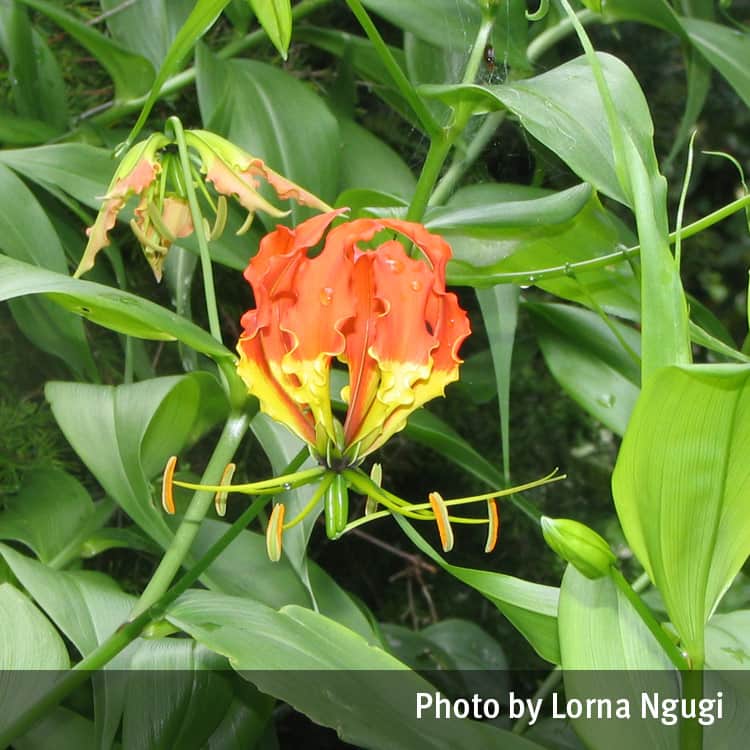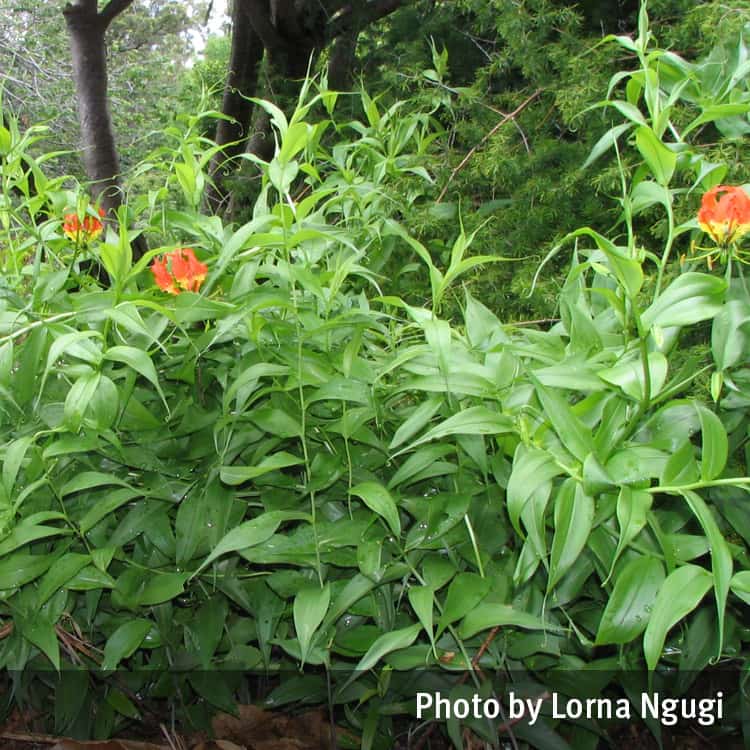Warning
Seek urgent medical assistance for all ingestions.
Description
A climbing/scrambling tuberous perennial cultivated as an ornamental, but now found mostly in disturbed areas in sandy coastal regions.
The showy flowers are bright red, orange or yellow, with the petals deflexed backwards and six prominent spreading stamens. The singly borne flowers usually point downwards with the petals having a wavy margin; 4.5-7.5cm in diameter.
Bright green leaves are 4-25cm long and 1.5-4.5cm wide, shiny, lance-shaped tapering to a tendril-like tip. These tendril leaf tips curl around supporting plants.
Toxicity
Symptoms
Symptoms of ingestion can include numbness of the lips, tongue and throat. Nausea, vomiting and abdominal pain may develop after 2-12 hours; increased heart rate and chest pain. Seizures, bone marrow failure and death have been reported. Contact with the tubers or sap may cause contact irritation of the skin.
Images


Details
Common name: Glory lily
Botanical name: Gloriosa superba
Other common names: Flame lily, gloriosa
Family: Colchicaceae
General description: A climbing/scrambling tuberous perennial cultivated as an ornamental, but now found mostly in disturbed areas in sandy coastal regions.
Flowers: The showy flowers are bright red, orange or yellow, with the petals deflexed backwards and six prominent spreading stamens. The singly borne flowers usually point downwards with the petals having a wavy margin; 4.5-7.5cm in diameter.
Leaves: Bright green leaves are 4-25cm long and 1.5-4.5cm wide, shiny, lance-shaped tapering to a tendril-like tip. These tendril leaf tips curl around supporting plants.
Fruit/Berries: The fruit is an oblong, three-lobed green capsule, 3-10 cm long containing numerous red, spongy seeds.